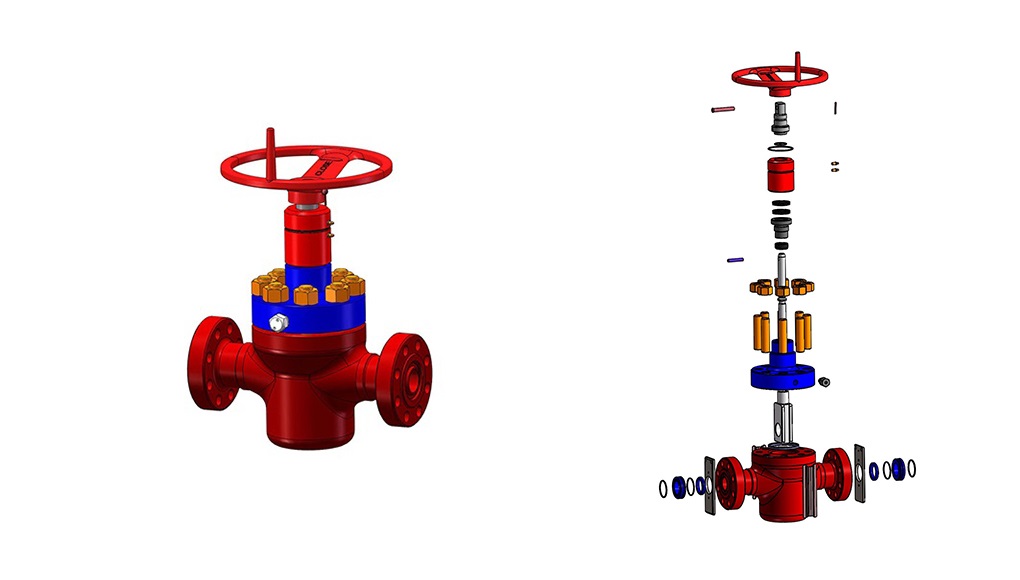




API 6A slab gate valves are widely used in high-pressure, harsh environments such as oil and gas pipelines, where their performance directly impacts system safety and reliability. To ensure long-term operational integrity, a structured maintenance plan tailored to their design and working conditions is essential. Below is a comprehensive guide covering daily maintenance, periodic inspections, operational protocols, and storage management.
---
## **I. Daily Maintenance**
1. **Cleaning and Lubrication**
- Regularly remove dirt and debris from the valve surfaces and internal components to prevent particle abrasion on sealing surfaces or flow path blockages. Use specialized cleaning agents; avoid corrosive solutions like strong acids or alkalis.
- Lubricate moving parts (e.g., valve stem, stem nut, bearings) at least quarterly with grease (e.g., molybdenum disulfide or graphite-based grease). Inject grease through the designated lubrication fittings on the valve bonnet, ensuring proper dosage to avoid overfilling.
2. **Sealing Integrity Checks**
- Inspect stem packing and flange seals weekly. For minor leaks, tighten the gland packing nuts evenly (ensure the gland remains perpendicular to the stem). Replace packing if leaks persist.
- Manually cycle the valve 2-3 times periodically to check the gate-to-seat alignment. If internal leakage occurs after closing, inspect the sealing surfaces for wear and repair or replace components as needed.
3. **Corrosion Prevention**
- Install protective covers on stems in humid or salt-laden environments to prevent rust. Apply anti-corrosion oil to valve surfaces, especially machined areas.
---
## **II. Periodic Inspections**
1. **Quarterly Maintenance**
- Inspect the trapezoidal threads on the valve stem and nut. Replace components if thread wear exceeds 30%.
- Measure valve operating torque. Abnormal resistance may indicate internal fouling or gate obstruction.
- Exercise valves left inactive for extended periods by rotating the handwheel to prevent stem-packing adhesion.
2. **Annual Overhaul**
- Disassemble, clean, and inspect internal components. Remove deposits from gate tracks, sealing surfaces, and other critical areas.
- Evaluate sealing surfaces: Replace or regrind seats if scratches exceed 0.5mm depth or pitting is observed.
- Replace all wear-prone parts (e.g., packing, O-rings, springs) with API 6A-compliant materials (e.g., high-temperature graphite packing rated ≥300°C).
---
## **III. Operational Guidelines**
1. **Valve Cycling**
- Operate only with the original handwheel. Use of extension levers or impact tools is prohibited. After full closure, reverse the handwheel by ½ turn to allow gate flexibility, preventing seat deformation.
- Cycle valves slowly to avoid cavitation or vibration damage from rapid fluid冲击.
2. **Installation and Welding**
- Keep valves fully open during pipeline welding. Protect the stem area with wet cloths to prevent heat damage to packing.
- Post-installation, conduct pressure tests: strength test at 1.5× working pressure and seat seal test at 1.1× working pressure per API 6A standards.
---
## **IV. Storage and Idle Management**
1. **Long-Term Storage**
- Store valves indoors on ventilated racks. Seal flange ends with wax paper or plastic film to prevent contamination. Avoid ground contact or stacking.
- Keep gates closed and apply food-grade grease to sealing surfaces. Inspect stored valves semi-annually, replenish rust inhibitors, and exercise moving parts.
2. **Idle Protection**
- For valves inactive >3 months, drain and flush internal cavities to prevent media crystallization or corrosion.
- Replace asbestos-based packing with weather-resistant PTFE packing to mitigate stem galvanic corrosion.
---
## **V. Key Precautions**
- **Prohibited Actions**: Do not hang heavy objects on valves or climb on them. In cold environments, verify seal elasticity to prevent brittleness.
- **Emergency Response**: For high-pressure leaks, immediately isolate upstream/downstream lines, depressurize the system, and repair under safe conditions. Never perform live maintenance.
---
By implementing these practices, API 6A slab gate valve service life can be significantly extended while minimizing failure risks. Establish standardized maintenance records and schedule periodic API 6A compliance audits with qualified technicians. For further details, consult API 6A specifications or contact the valve manufacturer’s technical support team.
Contact
Get a quote from us now. Benoston Machinery Co., Ltd. is a manufacturing company specialized in manufacturing wellhead equipment and valves. We are very interested in OEM manufacturing. We employ over 50 experienced staffs in...
Benoston Machinery Co., Ltd. is a manufacturing company specialized in manufacturing wellhead equipment and valves. We are very interested in OEM manufacturing. We employ over 50 experienced staffs in... Any question or request?
Click below and we'll be happy to assist. Contact